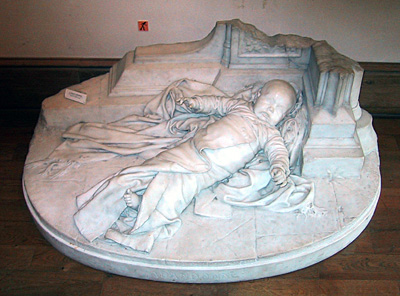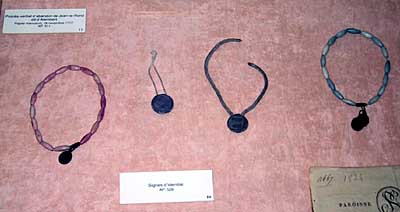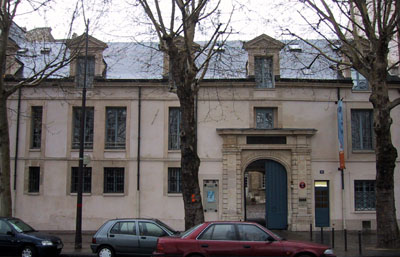
During medieval times, infant mortality was enormous, lives were cheap, and abandonment of newborns was common. This practice became even more widespread in France during the 1700's. Many abandonments were undoubtedly due to the poverty and misery of the lower classes, but the increased rate of illegitimate births during this time was another contributing factor. By one account, there were more than 7000 infants abandoned per year in Paris prior to the Revolution. The common practice was to "expose" the child in a public place, often under the porch of a church (as shown in the 1894 marble sculpture by Robert, below). Other infants were abandoned in the hospital after their birth or with a midwife.

"Le Tour d'abandon" (the desertion tower) came into use in several cities at the beginning of the 19th century. It was installed in the wall of institutions such as l'Hôpital des Enfans-Trouvés (Paris's hospital for foundling infants) and worked rather like a revolving door. Parents could leave their offspring anonymously without any risk. The parents opened the front door of the tower, which was on the outer wall of the building, and placed the baby inside a compartment that was on a turntable. The nuns could then rotate the turntable and remove the newborn from the tower within the building without seeing the parents. Use of the tour d'abandon was sanctioned by an imperial decree in 1811 and they seem to have been used from about 1810 to 1860.
Sometimes the child would be abandoned with some form of identification or memento so that, perhaps, the parents could reclaim him/her at a later date. The picture below shows examples of "signes d'identité" that were left with infants by the parents.

The artifacts shown here are located at the Musée de l'Assistance Publique - Hôpitaux de Paris, 47, quai de la Tournelle, 75005 Paris, France.
